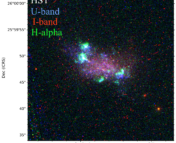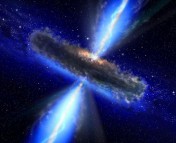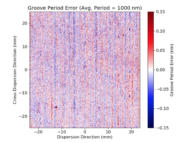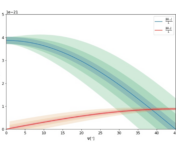The Undergraduate Research series is where we feature the research that you’re doing. If you are an undergraduate that took part in an REU or similar astro research project and would like to share this on Astrobites, please check out our submission page for more details. We would also love to hear about your more general research experience!
Kaelee Parker
San Diego State University,

This post was written by Kaelee Parker, a graduate student at San Diego State University, in the last semester of their Astronomy M.S. program. This research was primarily conducted while she was an undergraduate at Case Western Reserve University, in collaboration with Dr. Stacy McGaugh. The project was presented at the 237th AAS meeting and is being prepared for publication.
An outstanding question in extragalactic astronomy is whether dwarf galaxies follow the baryonic Tully-Fisher relation (bTFR). This relation, which compares the baryonic (aka “normal”) mass of a galaxy to the rotational velocity on the outskirts of the galaxy, is well-tested for spiral galaxies and shows a tight correlation between these properties. Only recently have measurements become sensitive enough to study the rotational velocities of very faint dwarf irregular galaxies surrounding the Milky Way, which will allow us to determine whether dwarf galaxies obey the bTFR. Even so, it is exceedingly difficult to produce reliable models for the overall rotation of these systems for a number of reasons, including: they are relatively faint (low signal-to-noise), they tend to have messy distributions of neutral hydrogen (HI; the data for this project comes from 21 cm observations so the rotation curves are tracking the rotation of the HI gas), and they are irregular in shape (warps and thicker disks, for example). With these difficulties, it is important for many different groups to study their dynamics in order to minimize biases and hopefully lead to a more accurate picture of dwarf galaxy rotation. Some previous studies of this kind have noticed deviations from the bTFR for some low-mass galaxies and the question becomes: Are these deviations intrinsic to these galaxies or are the deviations simply due to normal, observational, scatter and the limitations involved in modeling dwarf galaxy dynamics?
Through this project, I modeled the rotation curves for 14 nearby dwarf galaxies from the VLA-ANGST survey using the 3-D tilted ring fitting software, BBarolo. Using the flat rotational velocities (vflat) determined from these rotation curves, we found that the majority of our sample seem to be in agreement with the bTFR, since the amount of scatter seems typical when compared to the scatter observed with galaxies from the SPARC database (Spitzer Photometry & Accurate Rotation Curves), shown in the figure below. However, there are a few galaxies that might be real outliers. If these potential outliers can be verified to intrinsically deviate from the bTFR, our model for cosmology will need to be able to explain this variation. Future work will be with determining the validity of these potential outliers.
Astrobite edited by: Haley Wahl
Featured image credit: Kaelee Parker




